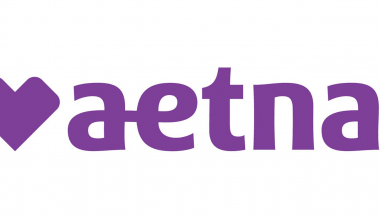The insurance policy check contains the basic details of your policy. They spell out your policy’s terms and conditions and serve as a reference for both you and your insurer for coverages, exclusions, rules, and claim procedures. While you need to read these policies, they are not always simple to understand. For you to better understand your insurance policy, we will break down the various types of insurance policy here.
What is an Insurance Policy
Insurance is a legal contract between the insured (the person or business that buys the policy) and the insurer (the company that provides insurance), where the latter pays the insured a certain amount of money if anything bad happens, like an unexpected death, an accident, damage to a car or home, etc.
To receive the benefits of insurance, the insured must pay the insurer a set amount of money regularly. A “premium” is a set amount that the insured pays to get a certain amount of insurance coverage.
The idea of insurance is, to put it simply, very simple. If you own something important that you can’t afford to replace or pay for if it gets lost or broken, the law requires you to get insurance. When you buy insurance, you can be sure that if something goes wrong, the insurance company will cover the costs and put less strain on your funds.
Insurance Policy: How It Works
Insurance is one of the best ways to protect yourself and your family from a financial loss that could wipe out all of your savings in a single blow. To make the insurance policy work, the insured and the insurer enter into a legal contract.
There are many clear terms and conditions in this insurance policy that tell the insurance company when they have to pay out the benefits to the policyholder or their beneficiaries. This means that if the insured person dies or something else bad happens, they can file a claim with the insurance company. And once they give their final OK, the insurance company pays out on the claim.
However, because a few individuals use their insurance, the insurance company charges a high fee for a high level of coverage. They do this because they are willing to take a chance by giving you a lot of coverage for a low price. Also, a lot of people buy insurance from the company, and all of them pay payments. Hence, it is important to remember that not every insured will lose money at the same time.
Insurance Policy: Its Components
You can select a policy by understanding how insurance operates. For instance, comprehensive insurance might not be the best option for you. The policy limit, the deductible, and the premium are the three components that make up any type of insurance.
The price of a policy is the premium, and it’s usually a monthly fee. When setting a rate, insurance companies often look at several things. Here are some examples:
- Your history of property and car claims, your age and where you live, your credit score, and many other things that may be different in each state can affect your auto insurance rates.
- What affects your home insurance rates are the contents, location, claim history, and amount of coverage you need.
- Health insurance rates depend on your age, gender, location, health, and the amount of coverage you choose.
- Life insurance rates depend on your age, gender, health, smoking habits, and the amount of coverage you want.
What matters a lot is how the insurance company sees your chance of making a claim. If this is the case, your car insurance policy will probably cost more than one with a single mid-range sedan and a perfect driving record. However, different insurance companies may charge various rates for the same type of plan. You need to carry out some work to find the right price for you.
#2. Policy Limits
One of the things that insurance companies will pay for a protected loss is the policy limit. Higher limits can be set for each period (like a year or the term of the policy), for each loss or accident, or for the whole policy’s life, which is also the lifetime maximum.
#3. Deductible
The deductible is the amount of money you have to pay out of pocket before your insurance company pays your claim. Deductibles act as barriers to the filing of numerous small claims. However, depending on the insurer and the type of coverage, deductibles may apply per policy or claim.
Insurance Policy: The 5 Parts of an Insurance Policy
Here are the basic sections of an insurance policy and what you’ll find in each:
#1. Pages for Declarations
The Declarations Page is sometimes written as “dec page,” even though it may take more than one page. The first part you’ll see covers the most important parts of your policy. Things that should be in it are:
- Describes the kind of service that is being offered.
- Information about the policy, such as the length of time it covers, the number of policies, and the payment
- Persons and property names (if relevant)
- Your policy limits are in dollars, as are the deductibles that go with them.
- The number of recommendations that the policy covers
- The policy earned discounts.
#2. Definitions
A part called “Definitions” explains common words and helps keep them from being unclear, which could hurt the insurance company in court. Certain insurance contracts may have limited meanings for common words. Within the policy, you hear defined terms with special formatting like italics, boldface, and quotation marks to show that they have specific meanings. However, words that are specified should be carefully read to see what they include and don’t include in coverage.
#3. Insuring Agreements
A policy’s main part is usually the insurance agreement. There is a list of the people and things that the policy covers, along with what the insurance provider promises to do and not do in exchange for your premium. This could mean paying up to the insurance limits for damage to property, injuries, and legal fees in a covered car accident.
#4. Limitations and Exclusions
Things that your insurance doesn’t cover are listed in the Exclusions section, which usually comes after the Insuring Agreements. Auto insurance may not cover normal wear and tear damage. This means that instead of listing all possible coverages and exclusions, policies may have a section for when certain things are covered. The limitations of the policy are explained in the “Limits of Liability” section, which is found on the “Declarations Page.
#5. Conditions
The Conditions section includes the policy clauses that qualify or restrict the insurance company’s promise to pay or perform. That means the insurance company might not pay out if you don’t meet these requirements. As part of your homeowner’s insurance, you may have to protect your property after a loss to stop it from getting worse or let the insurance company look over a fire damage claim before you start making fixes.
In addition to that, even though knowing the five parts of an insurance policy can help you understand your benefits better, your insurance agent can go over the details of your policy with you so that you fully understand it and can make any necessary changes.
Types of Insurance Policy
There are many types of insurance policies that people and businesses can choose from to protect their finances. Each policy is designed to meet the specific needs of its clients. Read this section to learn about the most common types of insurance policies on the market.
Types of Insurance Policy: Detailed Guide
Although there are many types of insurance policies, some of the most common are:
#1. Auto insurance
It is almost always required to have car insurance to drive a car. You could face heavy fines and problems getting insurance in the future if you are caught driving without one. In the event of an accident or theft, auto insurance is meant to protect drivers from losing money. The following coverage helps it do that:
- Personal injury protection (PIP)
- Collision insurance
- Comprehensive insurance
- Uninsured motorist (UM) coverage
- Underinsured motorist (UIM) coverage
#2. Home Insurance
Home insurance, also known as homeowners’ insurance, is not required by law. However, most lenders make it a requirement to get a mortgage. Homeowners’ insurance may work differently based on where the house is located and other factors, but most of them cover the following:
- Property damage
- Personal property
- Liability
- Loss of use
- Medical payments
#3. Health insurance
Health insurance policies are meant to help policyholders pay for medical care by covering some of the charges made by doctors and hospitals. The website for the US government’s health insurance market, HealthCare.gov, says that this kind of coverage comes in different forms to meet the needs of different insured people. The following are the individual components:
- Exclusive Provider Organization (EPO)
- Health Maintenance Organization (HMO)
- Preferred Provider Organization (PPO)
#4. Life Insurance
Life insurance is different from health insurance in that it gives a tax-free lump sum to the policyholder’s family when they die. Different types of coverage can be broken down into two main groups. Each group provides a different amount of protection. The following are the individual components:
- Insurance for Term Life
For a certain amount of time, this kind of insurance protects the insured. If the policyholder dies within a certain amount of time, the insurance pays out a set amount, called a death benefit.
- Life insurance with permanent benefits
A permanent contract does not end as term life insurance does. Coverage comes in two main types, both of which mix a death benefit with a savings feature.
Insurance Policy Check
It’s possible to get a claims check from your insurance policy company if you’ve claimed an insured event. Even though it sounds great, this isn’t just a nest egg of cash that you can put in the bank. However, you might have to follow a certain set of rules to get the money. This is especially true if you owe money because of the claim, like for medical bills or damage to your car. This article will help you understand what to do with a car insurance policy claim check in a variety of situations.
Insurance Policy Check: Detailed Guide
When you file a claim with your car insurance company for something covered by your policy, you will most likely receive a check to cover the costs of the damage (less any applicable deductible). However, if you want to know if your accident is covered, you can speak with a qualified insurance agent.
Once a claim is made, however, it will be up to the claims manager to look into it and decide if the insurance will cover it. After you and the adjuster agree on a settlement, you will get a claims check from your insurance company for a certain amount of money to cover the losses.
Cashing an insurance policy claim check can be difficult, especially if the check does not come with specific instructions on how to use it. In essence, a claim check can be handled in a variety of ways, but in most cases, it will be made out to the people who are primarily responsible for making the repairs. Most of the time, your claim check will be sent directly to you, two parties, or a lienholder. But this depends on your situation, like who has an insurable interest in your car.
Why is insurance so expensive?
Rising car repair costs and an increase in disaster-related claims are significant reasons why car insurance rates are surging for many drivers.
What are the benefits of an insurance policy?
Insurance is a financial safety net, helping you and your loved ones recover after something bad happens
What is the cash value of a $100,000 life insurance policy?
A $10,000 term life insurance policy has no cash value.
Which insurance is most important, and why?
Health insurance is the single most important type of insurance you’ll ever buy. That’s because if you don’t have health insurance and something goes wrong, it’s not just your money at risk; it’s your life.






